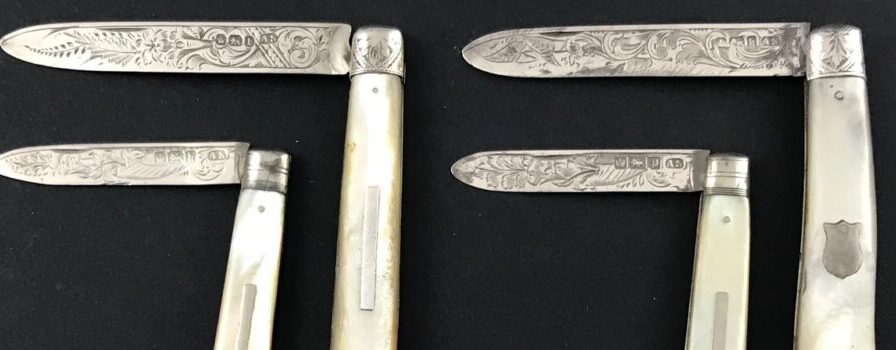pocketfruitknives.com is an extension of a personal passion for folding pocket fruit knives. Although these luxury items were made in small numbers during the late 17th and early 18th centuries it wasn’t until the 1770s that they became fashionable and began to be made in increasing numbers by skilled cutlers and craftsmen in the English cities of Sheffield, Birmingham and London.
Such was their cost that those who made them couldn’t really afford to buy one as the price of such luxury knives was more than a week’s wages. By contrast, today these beautiful pieces of exquisite craftsmanship are a fraction of their original cost in real terms.
Because they are small, precious and relatively rare they are ideal collectors’ items. My pocket fruit knife clients are all over the world. Some only collect knives in mint or near mint condition, others choose to collect knives from some of the premium makers like John Yeomans Cowlishaw, George Unite, James Fenton, Thomas Marples, Arthur Staniforth, John Oxley, William Needham, Robert Pringle or Hilliard & Thomason. Other collectors aim to own a pocket fruit knife from different years. One client has a knife from almost every year of the 19th century — he’s missing a few from the late George III era when the silver hallmark date letter was usually hidden on the inner tang of the blade.
Each of these beautiful little gems has its own story. With more than 200 different makers, a range of shapes, styles, sizes and designs and hallmarks dating the knives from 1770 to 1930 there is plenty of scope for the avid collector. As these delightful pieces of social history become more and more scarce their value can only increase.
In June I published An Encyclopedia of English Pocket Fruit Knife Makers 1790 – 1930 which will be a vital aid to collectors, antique dealers, auction houses and museums.




